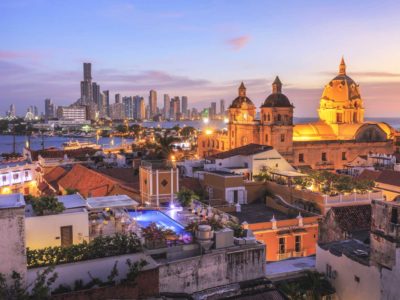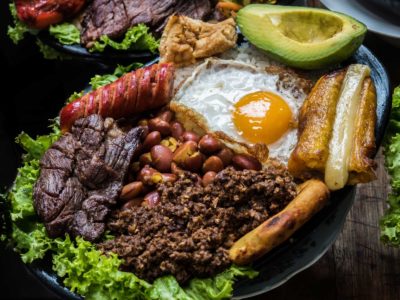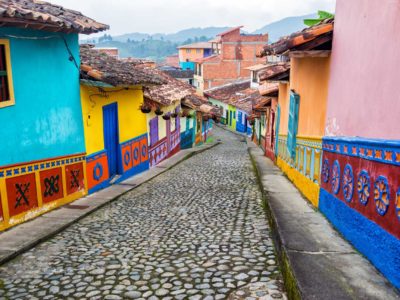Have you wanted to travel to South America but can’t decide which country to visit? Well, Colombia was rated the happiest place in the world as of 2021. Wouldn’t you want to see the happiest place in the world? You can! It’s time to pack up your things and travel to the beautiful area in Colombia. But, before you grab your suitcase and sunglasses, continue to read below for some more interesting facts about Colombia.
Table of Contents
Interesting Facts About Colombia
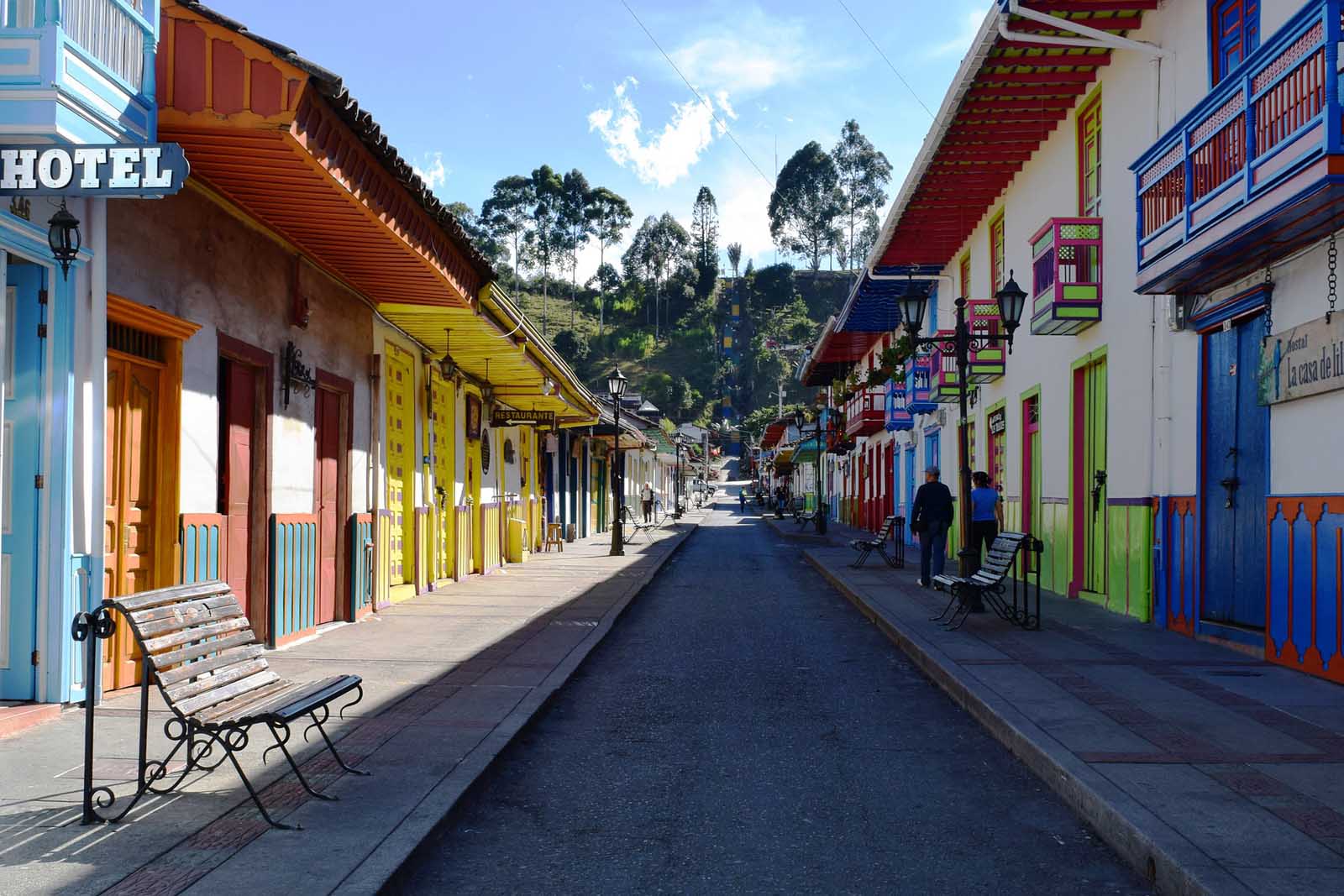
Colombia is a safe, beautiful, and tourist-friendly country. A perfect destination for anyone looking for fun and relaxation. We hope the fun facts about Colombia help entice you to visit sometime soon. Before you travel to Colombia, check out this guide, which explains in great detail all other things you may want to know beforehand. Topics include food, plane tickets, budgeting, and more. Keep reading for some interesting facts about Colombia!
Named after the explorer Christopher Columbus, Colombia
1. Colombia Has More Than 4,000 Species of Orchids
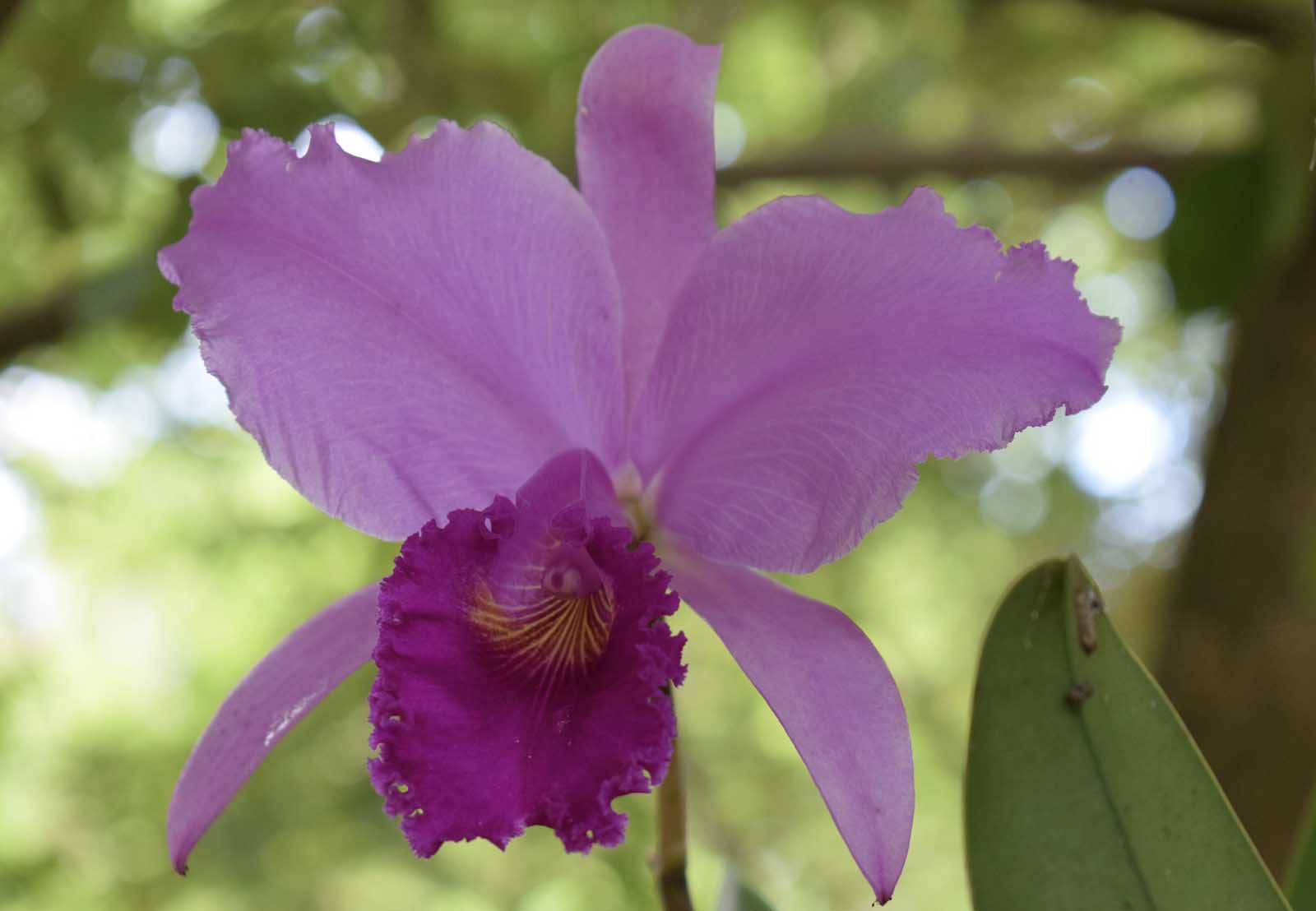
An interesting fact about Colombia is that it is one of the largest flower producers in the world. 70% of the flowers are imported to the United States. But, out of the grand 4,000 orchid species, 1,500 are only found in Colombia. It is a botanist’s dream to research the 1,500 orchids unique to the country.
The orchids come in different shapes, sizes, and colors. But, the most popular shades of orchid are purple, magenta, and pink. An orchid named Cattleya Trianae is the national flower of Colombia. It is only fitting that Colombia’s national flower would be an orchid. The orchid, is named after José Jerónimo Triana, a Colombian naturalist and botanist.
There is a wide variety of orchids in Colombia because of the warm climate. The orchids thrive in a warm climate because they are not threatened by extreme heat or cold. This is because Colombia’s location is right on the equator. Thus, making it the perfect climate for thousands of one-of-a-kind orchids to grow. If you visit Colombia, you must visit local shops that sell native orchids or explore natural life.
2. Colombia Is the Second Most Biodiverse Country on the Planet
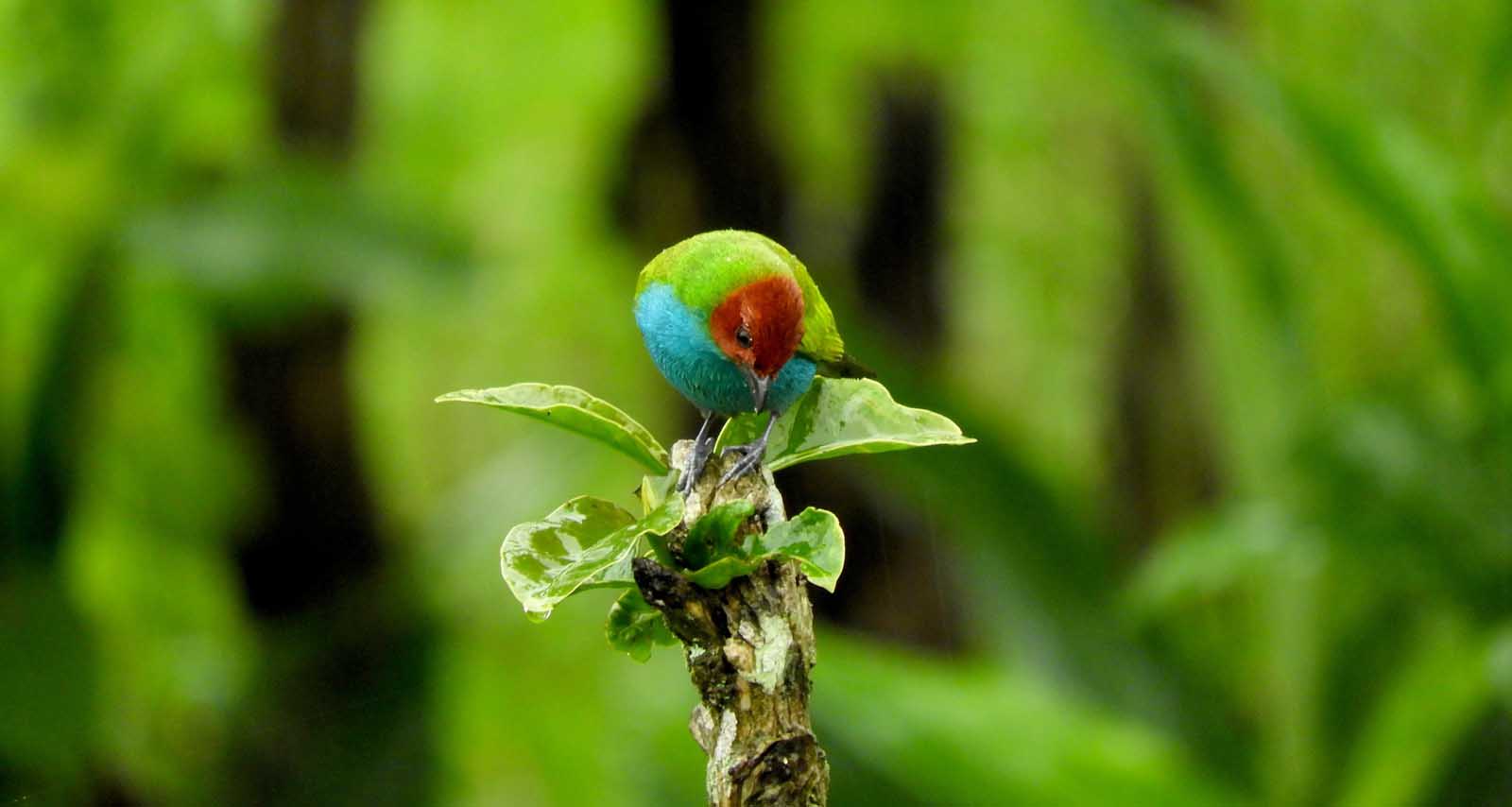
Another interesting fact about Colombia is its unique location. The location makes the country known as one of the most biodiverse. Its neighbor Brazil is considered the most biodiverse. Part of the Amazon rain forest, the Andes mountains, and the Sierra Nevada de Santa Marta mountains encompasses Colombia. It is open to parts of the Pacific and Caribbean seas.
On top of that, it is named a tropical location because of its location near the equator. Colombia is the perfect breeding ground for all plants and animals with a vast array of flora and fauna. Colombia has about 60,000 different species! If you travel to Colombia, you will be guaranteed to see at least a few of them.
Colombia has the most bird, butterfly, and amphibian populations compared to anywhere else in the world. In fact, Colombia has a higher amount of species of bird than North America and Europe combined! If you are a lover of nature and landscape, Colombia is the perfect destination for you.
3. Colombia Has 60 National Parks
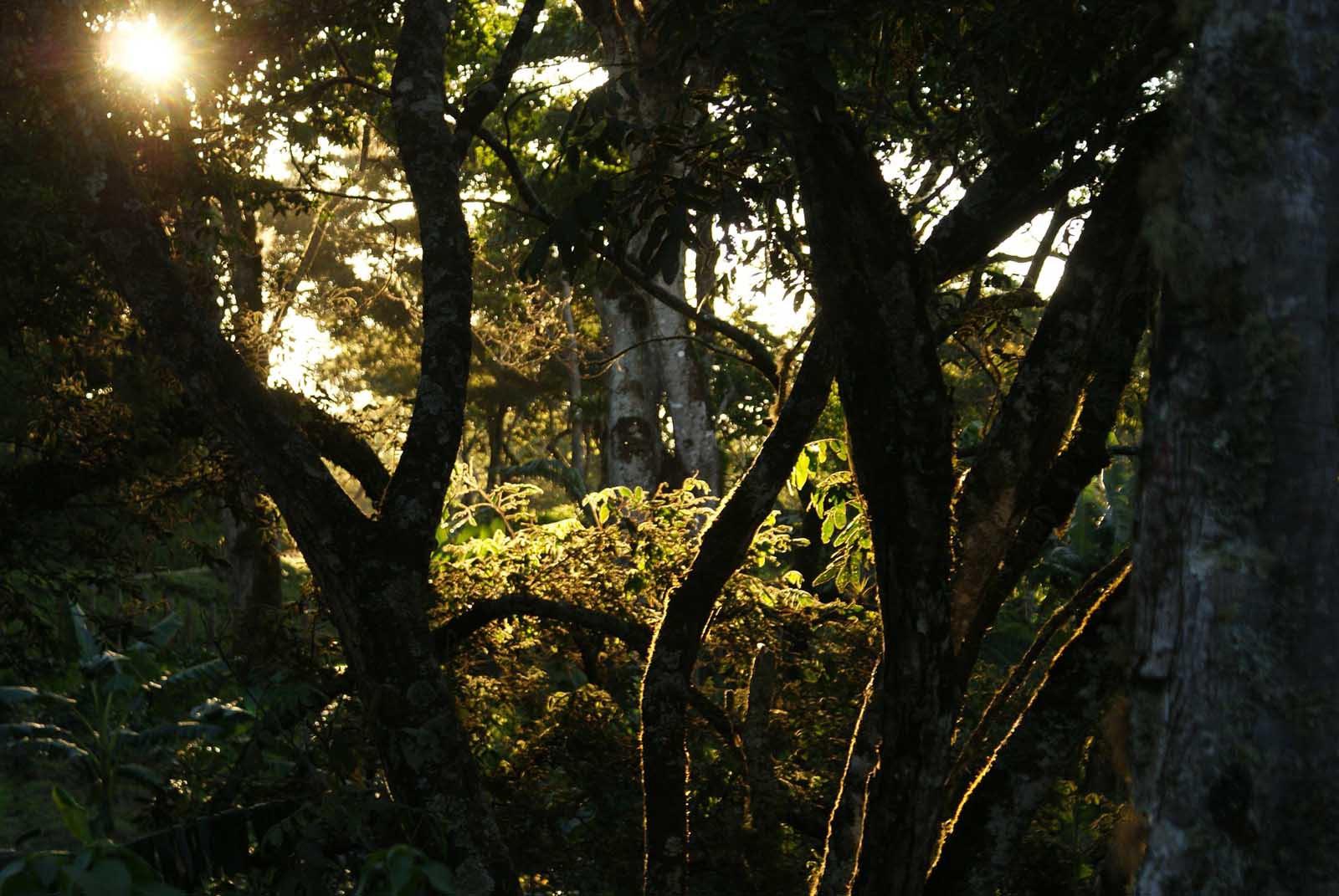
Colombia’s national parks combine many different types of terrain. From forest, aquatic, mountainous, deserts, and more, it has something for every nature lover. One of the biggest national parks is the Unesco Worl Heritage Site of Chiribiquete National Park which is otherwise known as, “The Maloca of the Jaguar”. It spreads over 4.3 million hectares. This national park covers the Orinoquia, Guyana, Amazonia, and North Andes provinces.
Thousands of different species of animals and plants inhabit the park. Many species are native to Colombia and threatened, such as the jaguar. Chiribiquete National Park is well known for its heritage purposes. The rock walls in the park terrain contain ancient rock paintings, some of which date back to 20,000 BC. It is said that more than 70,000 figures have been documented on the walls of the 60 rock shelters that are in the park. Aside from Chiribiquete National Park, there are many other fascinating parks to visit, such as Tayrona National Park, Coral Islands Natural Park, Old Providence McBean Lagoon, Sierra Nevada del Cocuy, and more. Colombia’s rich environment allows nature lovers to have some nonstop exploring.
4. Colombia Has Some of the Most Popular Tourist Cities
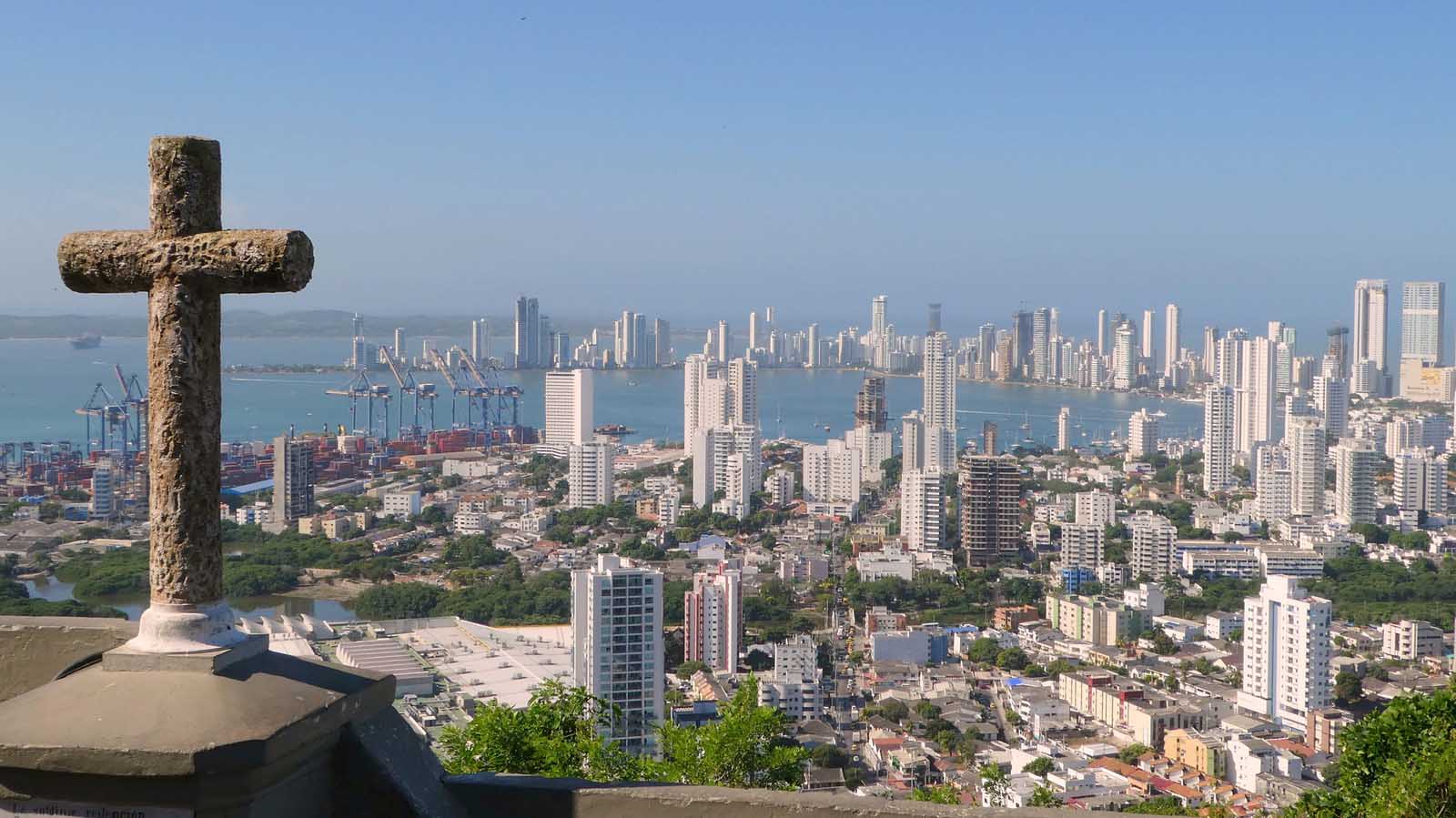
Colombia is well known for its diverse and tourist-friendly cities. Cartagena is one of the most popular cities in Colombia, located on the Caribbean coast. The city is a very well-known fishing village, containing a rich history with old colonial architecture. Although it is a city, its border to the water creates a peaceful atmosphere. With local shops, restaurants, and an ocean view, it is the perfect place to relax.
Another famous city for tourism is Bogota. This city is more commercial, containing shops, theaters, churches, schools, and more. The area is diverse in Spanish and English speakers as well. People consider Cartagena and Bogota as two of the safest spots for tourists. The cities of Colombia are tourist-friendly and beautiful. Be sure to visit a few of them while you visit Colombia.
5. More People Speak Spanish Than Spain
Colombia has a population of over 50 million people, the vast majority of whom speak Spanish as their primary language. Spain, while being the birthplace of the Spanish language and having a strong linguistic identity, has a smaller overall population (around 47 million). Furthermore, Spain is home to several regional languages, such as Catalan, Basque, and Galician. While Spanish (often referred to as Castilian in Spain) remains the dominant language and is spoken by virtually everyone in Spain, the presence of these regional languages means that not everyone in Spain speaks Spanish as their primary or first language.
As a result, while Spain is the historical and cultural epicenter of the Spanish language, the sheer number of people in the Americas who adopted Spanish as their primary language over centuries has led to a larger total number of Spanish speakers in many Latin American countries than in Spain itself.
6. Colombia Is Home to the “Liquid Rainbow”
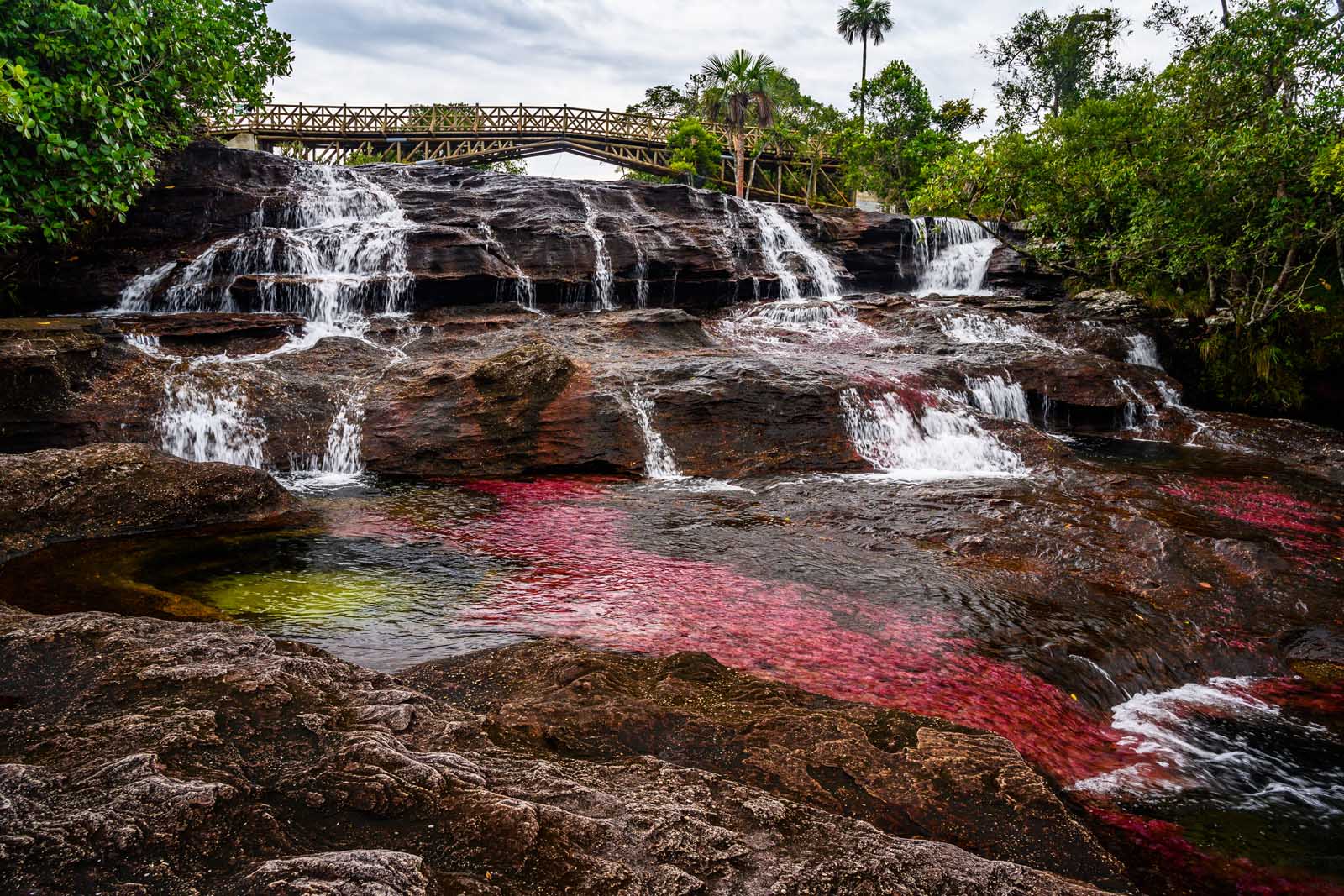
The Caño Cristales river, also referred to as the liquid rainbow, is 100km long. It changes its colors by the season. The colors range anywhere from shades of red, blue, and yellow, to orange, and green. This is just another of the many interesting facts about Colombia. The river’s rainbow-like colour does not occur anywhere else in the world. It is unique to Colombia.
A plant known as Macarenia Clavigera is responsible for the vibrant color-changing waters. With the right amount of sunlight, the aquatic plant can produce its beautiful colors. But, in a drought or a colder season, the aquatic plant will go into hibernation, leaving the river colorless. If you plan to visit the Liquid Rainbow, visit during the summertime. The area is safe for tourists too!
7. Colombia Has the Second Most celebrated Holiday in the World
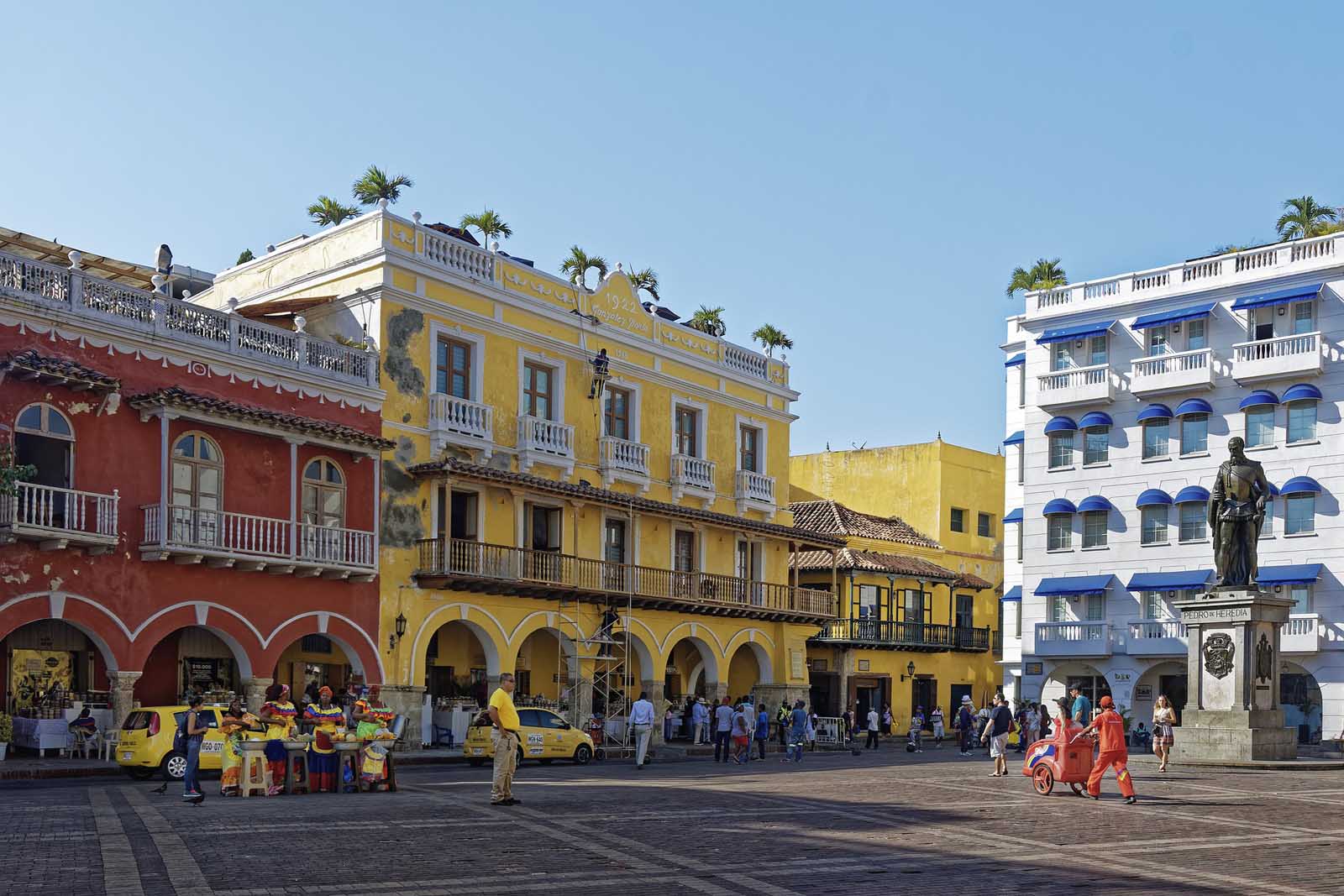
Another fact about Colombia is that they celebrate 18 national holidays a year. Although most of the 18 holidays are religiously affiliated, all Colombians partake in the holiday celebrations. What is unique about the Colombian holiday cycle is that it changes every year. This is because it follows the lunar cycle. But, there are exceptions to the lunar cycle, such as Christmas, Easter, Colombian Independence Day, and the Immaculate Conception which are celebrated on the same day each year.
During Colombian holidays the law requires that all Colombian employers give their employees a day off work. So, each year Colombian workers can be guaranteed at least 18 days off a year. Easter, on the other hand, has different criteria. Everyone takes off the week for Easter, and so businesses are closed for a week. Depending on when you travel to Colombia, you may travel during one of the 18 different holidays.
8. The Colombian National Anthem Plays Twice a Day
According to Colombian law, the national anthem, or Himno Nacional de la República de Colombia plays twice a day. It plays once at 6 am and again at 6 pm. The law requires that public television broadcasts and radio stations do this every day. They have to follow a specific manner of how the national anthem plays too.
It must play with the first chorus verse and, then it will play again. The national anthem plays in this way in all other public events such as sports or political campaigns. Since it plays so often, every Colombian citizen knows how to sing it. If you travel to Colombia, you will likely learn it and sing along too. Few countries will play their national anthem daily, making it yet another interesting fact about Colombia.
9. Flag of Colombia
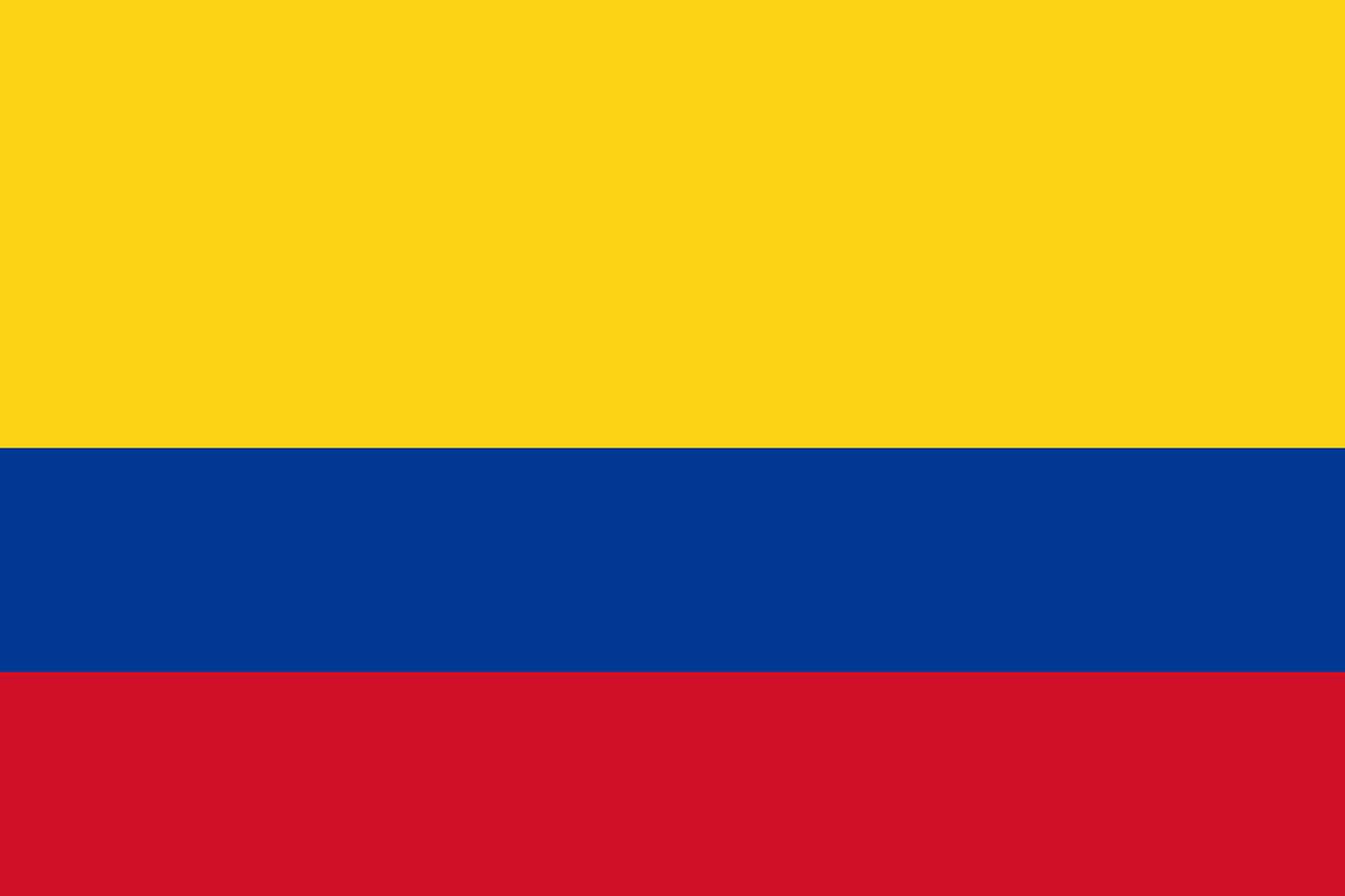
The flag of Colombia is a significant symbol of national pride and identity, embodying the country’s history, values, and aspirations. The Colombian flag consists of three horizontal stripes. From top to bottom, the colors are:
- Yellow: Occupying the top half of the flag, the broad yellow stripe represents the richness of Colombia’s soil and its abundant natural resources, particularly gold.
- Blue: The blue stripe, situated in the center and taking up a quarter of the flag’s height, symbolizes the two oceans (the Caribbean Sea and the Pacific Ocean) that border Colombia, as well as the vastness of the sky above the nation.
- Red: The bottom red stripe, also accounting for a quarter of the flag’s height, stands for the courage, resilience, and valor of the Colombian people. It is also said to represent the blood shed for Colombia’s independence.
10. The National Sport of Colombia Is Tejo
Tejo is a fun game that happens to be the national sport of Colombia. But how do you play Tejo? Well, the sport is related to bowling in a sense. People will throw tejos or a weighted steel disk towards a metal ring. The ring contains gunpowder pouches, which will explode if you hit them. Yes, explode. The game is loud and untamed. It is a fan favorite by men and women, especially those that enjoy drinking a cold beer.
Where there is Tejo, there is beer. The best part about Tejo is that you can play it by yourself or with a group of up to six people. The points are divided into three. If you hit the metal ring and it explodes you will receive 9 points, which is the most a person can get. If you hit the metal ring but it does not explode that makes up 6 points. If you somehow manage to explode the gunpowder pockets but not land on the metal ring then you will get 3 points. If you and your friends or family decide to play in teams, be prepared because it is a tradition that the losing team buys beers for the winning team. If you have an interest in some outgoing and reckless fun, Tejo is the game for you.
11. Colombia Has Two of the world’s Largest Festivals
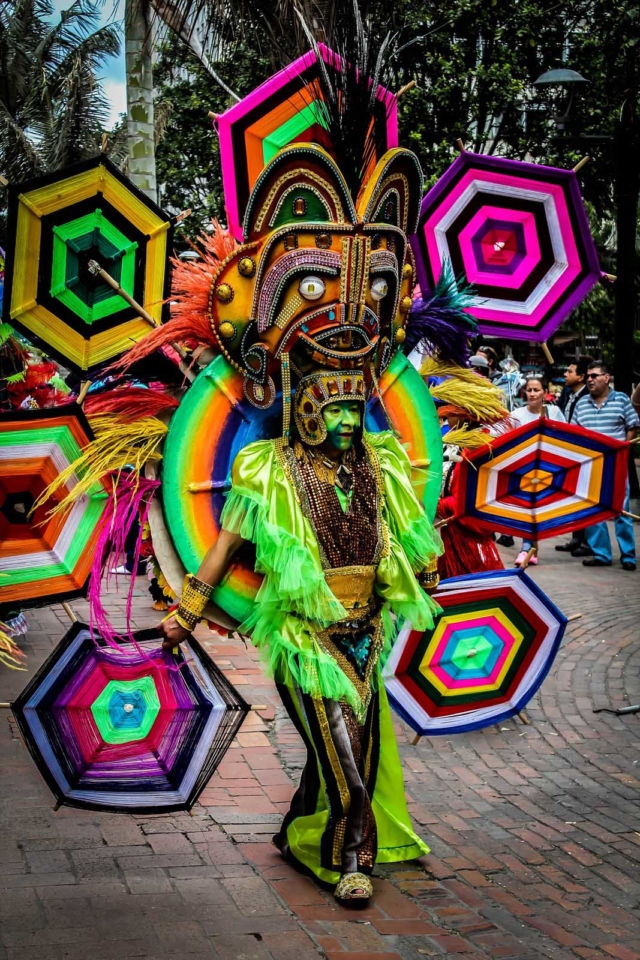
Another fun fact is that Colombia has the world’s largest salsa festival, otherwise known as Feria de Cali. People refer to Cali as the salsa capital of the world. It is held from December 25th to December 30th every year. This five-day festival contains grand musical, dance, and art performances. There are always different types of music, but the most popular, of course, is the amazing Latin music.
There are many concerts like Superconecierto, the most popular musical event. During Superconcierto, there are several themes of dance both, international and National. Feria de Cali also has Salsodromo, the street carnival. The carnival contains traditional Colombian food, treats, and sweets. They have art, jewelry, luxury cars, and more. It is a cultural event filled with music and fun.
Colombia has the world’s largest flower festival too. Of course, being the top flower producer in the world, the title is fitting. The flower festival takes place in Medellin. It consists of flower exhibitions, a parade, and local flower growers who come together to share what they grow. People who celebrate the festival will decorate their homes in beautiful flower decor to match the theme. During the festival, there are many other worthwhile events like an orchid expo, fireworks, art exhibitions, horse fairs, and more. The flower festival celebrates Colombia’s biodiversity and displays the most stunning flowers.
12. Colombia Is Number 3 in the World for Coffee
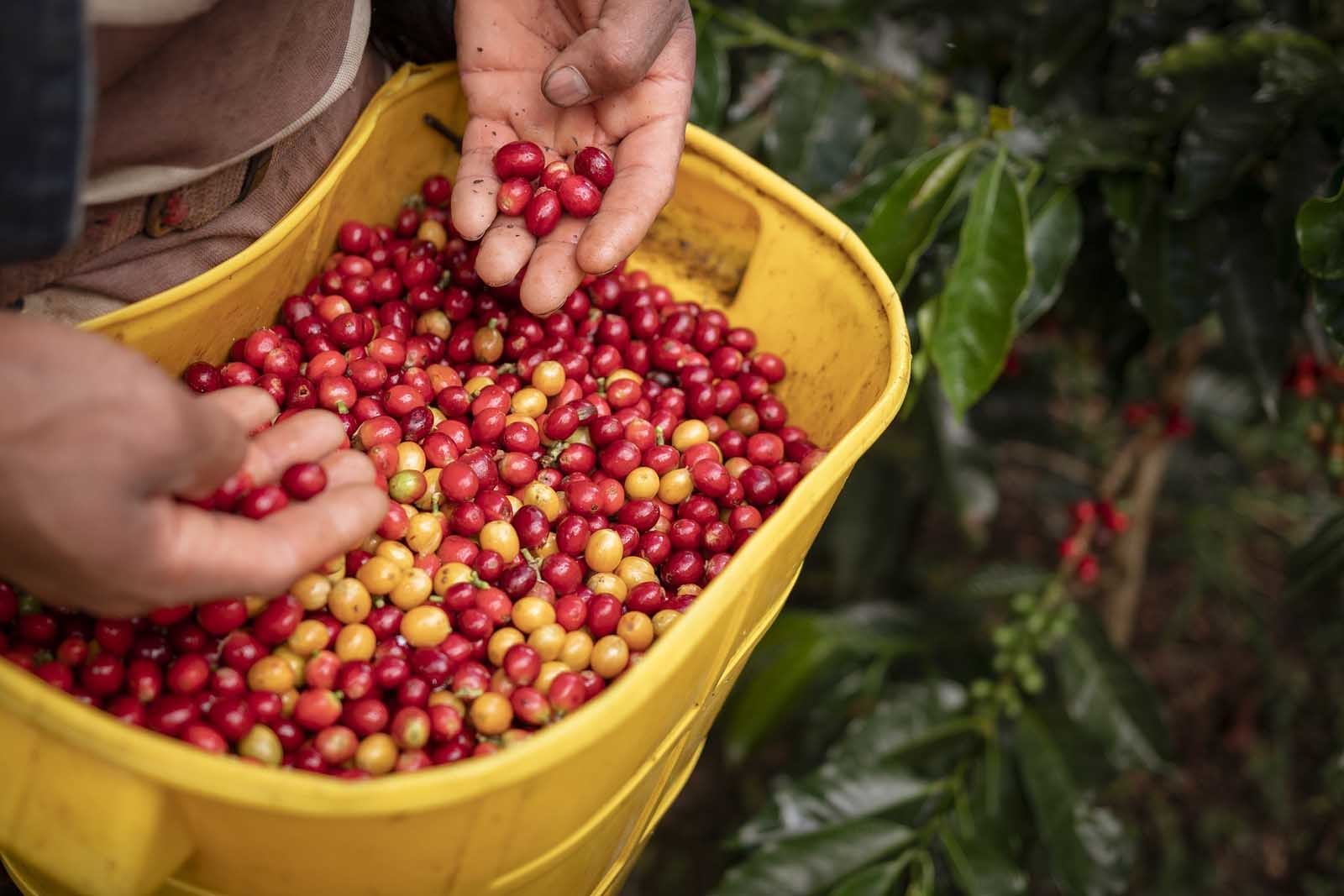
Coffee lovers will want to visit Colombia. The country is famously known for its rich brew. Colombia is a world exporter of coffee, having over 50,000 coffee bean farms/ plantation areas to produce your joy in a cup. The climate in Colombia makes the country one of the best locations in the world to sell and grow its coffee beans.
People describe their beans as very well-balanced and tasty. Colombia coffee grounds are made of 100% Coffea arabica (arabica). Workers put extra care into handpicking the beans, with a method called “cherry-picking”. They carefully examine the coffee trees until they think the beans are ready. The ethical sourcing of the coffee beans makes the coffee brew desirable. If you love coffee, you must visit Colombia.
13. Colombia has Two Coastlines
A geographic marvel, Colombia stands out as one of the unique countries in the world that boasts coastlines on both the Pacific Ocean and the Caribbean Sea. This dual coastline stretches for more than 3,000 kilometers and showcases a diverse ecological environment. In fact, Colombia is the only country in South America that borders two seas.
The Caribbean coast is renowned for its warm, azure waters and white sandy beaches, most notably around the stunning area of San Andrés and Providencia. In contrast, the Pacific coast is wilder, with dense rainforests meeting the sea, creating a breathtaking juxtaposition of thick jungle and dark-sand beaches. This duality has given Colombia a rich marine biodiversity, influencing its history, trade, and the culture of its coastal regions. From vibrant port cities like Cartagena and Buenaventura to secluded coastal gems, Colombia’s dual coastlines provide a fascinating blend of experiences for every traveler.
14. The Lost City is Older Than Machu Pichu
Nestled deep within the Sierra Nevada mountains lies Colombia’s archaeological treasure: Ciudad Perdida, or the “Lost City.” Thought to have been built around 800 AD, this ancient city predates the more famous Machu Picchu in Peru by several centuries.
Discovered in the 1970s, the Lost City is believed to have been the political and manufacturing center of the Tayrona civilization. Steeped in mystery and accessible only by a multi-day trek through dense jungle terrain, Ciudad Perdida offers terraced ruins spread across its green mountains, giving glimpses into a bygone era. Unlike Machu Picchu’s well-trodden paths, the Lost City remains relatively untouched, offering intrepid travelers a raw and authentic archaeological experience.
15. One-Third of Colombia is the Amazon Rainforest
The mighty Amazon is not just confined to Brazil; one-third of Colombia’s land area forms part of this vast rainforest. Serving as the lungs of our planet, the Colombian Amazon is a biodiversity hotspot, home to countless species of plants, animals, and indigenous communities.
Leticia, the capital of the Amazonas department in Colombia, is a gateway for exploration into this dense and diverse ecosystem. From boat trips along the Amazon river, spotting pink dolphins, to treks deep into the forest’s heart, the Colombian Amazon region is a haven for eco-tourists and adventure seekers.
16. Colombia Has Pink Dolphins
One of the most magical inhabitants of the Amazon River is the Pink Dolphin, or “Boto.” These The Amazon River Dolphins are freshwater dolphins, with their peculiar pink hue, have been a source of fascination and local legends for generations. Unlike their saltwater counterparts, pink dolphins are more robust with longer snouts and flexible necks, allowing them to navigate complex river systems efficiently.
The pinkish color varies among individuals and can change based on their emotions, behavior, or even exposure to sunlight. Encounters with these enigmatic creatures in their natural habitat have become a highlight for many traveling through Colombia’s Amazon.
17. Colombia is Home to the World’s Tallest Palm Trees
The Cocora Valley, located in Colombia’s coffee region near Salento, is a dreamlike landscape dotted with the world’s tallest palm trees, the Quindío wax palms. Soaring up to 60 meters high, these iconic trees punctuate the verdant rolling hills and misty skies, creating a surreal and picturesque setting.
Not just a sight to behold, the wax palm is also Colombia’s national tree and plays a crucial role in the region’s ecosystem. The valleys, with their unique topography and the towering palms, offer a distinctive and serene hiking experience, making them a must-visit for nature lovers and photographers alike.
18. The Lost City of El Dorado is In Colombia
The legend of El Dorado, often translated as “The Golden One,” is one of the most captivating and enduring tales. Stemming from the pre-Columbian era, the myth revolves around a city, or sometimes a king, abounding in immeasurable riches and blanketed in gold. Early accounts describe the ceremony of the new Muisca tribal chief, who would cover himself in gold dust and dive into Lake Guatavita, emerging as the new leader.
As the Spaniards began their conquests in the 16th century, tales of this “Golden City” spread like wildfire. Lured by the prospect of unimaginable wealth, many expeditions set out into the dense Amazon rainforest, navigating treacherous terrains and battling hostile conditions, all in search of El Dorado. These quests often ended in despair, with explorers either perishing in their attempt or returning empty-handed, their dreams of gold unfulfilled.
Over the centuries, the legend of El Dorado has metamorphosed, representing not just a physical city but the embodiment of unattained desires and the human spirit’s insatiable quest. Many theories have emerged about its possible location, with some suggesting it might be in present-day Venezuela, Guyana, or northern Brazil. However, despite the absence of tangible evidence, the mystique of El Dorado endures.
19. Colombia Bans Alcohol During Major Events
Colombia, like many nations, has a unique relationship with its societal norms and traditions. One such distinctive practice is the “Ley Seca” or “Dry Law,” where the sale and consumption of alcohol are banned during specific significant events and most national holidays.
This prohibition is implemented primarily during major elections or significant public events to ensure public order, reduce the likelihood of alcohol-induced incidents, and encourage a peaceful environment. The rationale behind the ban revolves around the idea that sober decision-making leads to safer environments, especially during politically charged times when tensions may run high.
While the ban might seem unusual to outsiders, many Colombians view it as a necessary and responsible measure, emphasizing collective welfare over individual privileges. The “Ley Seca” periods usually last 48 hours, starting the evening before the significant event and lasting until the following evening, ensuring that Colombians exercise their civic duties in a serene atmosphere.
20. Colombians Put Cheese on Their Hot Chocolate
In Colombia, a steaming cup of hot chocolate is more than just a drink; it’s a cherished tradition and an experience in itself. But what sets the Colombian version apart is the delightful addition of cheese. Yes, cheese! When served, small chunks of soft, white cheese are added to the hot chocolate and allowed to melt, creating a delightful contrast of sweet and salty.
Once the cheese has softened, it’s scooped out with a spoon and enjoyed alongside sips of the rich beverage. This comforting combination, often paired with almojábanas or pandebonos (local cheese breads), is a staple in Colombian households, especially during chilly mornings or rainy afternoons.
21. Colombia’s National Drink
Aguardiente, literally translating to “burning water,” is Colombia’s national drink and its prominence rivals that of tequila in Mexico or rum in the Caribbean. This anise-flavored liqueur, distilled from sugarcane, holds a special place in Colombian culture. Consumed during celebrations, festivals, or just regular weekends, Aguardiente is more than just a drink; it’s a symbol of Colombian camaraderie and festivity.
Each region in Colombia boasts its variant of Aguardiente, with varying levels of anise flavor liquor and sweetness. While it’s traditionally consumed straight, the younger generation has begun experimenting, using it as a base for innovative cocktails.
22. Bandeja Paisa: Colombia’s National Dish
Bandeja Paisa is not just a dish; it’s a hearty feast that encapsulates the richness of Colombia’s culinary heritage. Originating from the Antioquia region, this platter is a testament to the Colombian love for flavorsome and abundant meals. It consists of ground meat, red beans, white rice, chorizo, morcilla (blood sausage), fried eggs, plantains, avocados, and arepas. Each element brings its unique taste and texture, creating a symphony of flavors that satisfies every palate.
The name ‘Bandeja’ translates to ‘tray,’ aptly describing how the dish is traditionally presented: on a large platter big enough to hold its myriad components. Rooted deeply in the Paisa culture, Bandeja Paisa is more than just sustenance; it’s a culinary journey through Colombia’s diverse landscapes and cultures.
Speaking of food, in Colombia, they eat ants as street food.
23. Famous Colombians
Did you know that Shakira is from Colombia? So is Sofia Vagaro of Modern Family. I think I learned more about Colombia from that sitcom than I did in any history books. Actor John Leguizamo is Colombian and so is the infamous Pablo Escobar.
I personally hadn’t heard of him, but Juan Esteban Aristizábal Vásquez, known professionally as Juanes, is another famous Colombian musician.
24. Colombia Is a Leader in Emerald Production
Emeralds have been cherished in the region that is now modern-day Colombia for well over a millennium. Indigenous cultures, like the Muisca, prized these gemstones long before Spanish conquistadors set foot on the continent. When the Spanish arrived in the 16th century, they were captivated by the stunning quality and abundance of emeralds and began exporting them back to Europe, where they became highly sought after by royalty and the elite.
Colombian emeralds are often considered the world’s finest, known for their exceptional clarity and a distinct green hue that sets them apart from emeralds found elsewhere. This unmatched quality ensures they’re consistently in high demand and often fetch higher prices in the global market compared to those from other regions.
Colombia’s unique geological conditions make it a prime location for the formation of high-quality emeralds. The country’s mountainous Andean region has specific rock formations that, under the right conditions of pressure and temperature, lead to the creation of these prized gemstones. Most of Colombia’s emerald mines are located in the departments of Boyacá and Cundinamarca.
25. Colombia Highs
Colombia is home to the world’s highest coastal mountain range. The Sierra Nevada de Santa Marta reaches a height of 5700 meters and you can reach that from sea level in just 42 km.
It is also home to one of the highest capital cities in the world. Bogota, the capital city of Colombia stands 8,360 ft Above Sea Level.
Visit Colombia Today
Now that you have read a few interesting facts about Colombia, you should feel ready to embark on your trip to Colombia. Traveling to Colombia will be an experience you will never forget. Cyclists particularly love visiting Colombia, in fact, Colombia has one of the longest cycling routes in South America. The Altro de Letras is a 300 km cycling route that reaches 3,665 meters above sea level. This 80 km climb attractions cyclings from around the world.
But, will you take advantage of this opportunity? For a couple of years, traveling abroad appeared uncertain. Now is the time to travel and experience the world. Or at least, for now, start small and travel to Colombia today.
Colombia is bordered by five countries:
- Brazil to the southeast.
- Peru to the south.
- Ecuador to the southwest.
- Venezuela to the east.
- Panama to the northwest.
Additionally, Colombia has coastlines along the Pacific Ocean to the west and the Caribbean Sea to the north.

